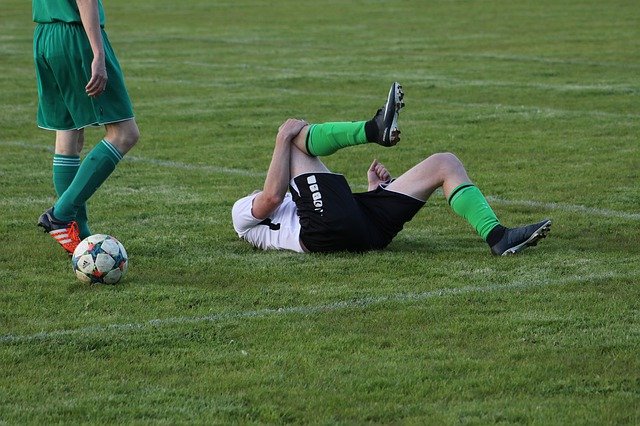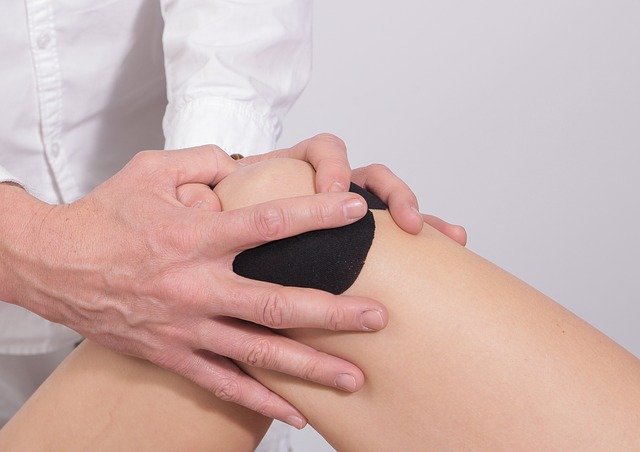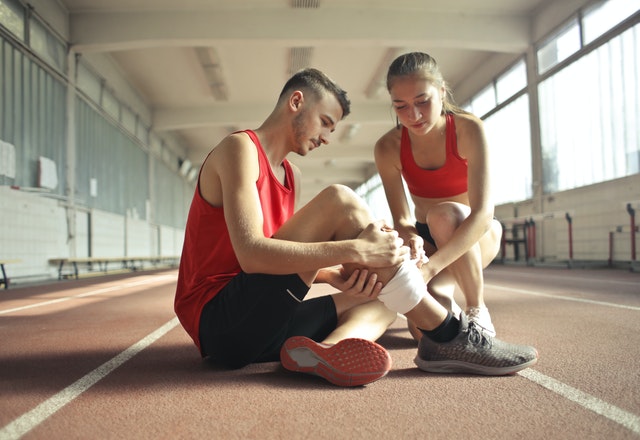Are you Suffering from Knee Pain: Ten Common Knee Injuries
Physiotherapy for Knee Pain: For several individuals, notably overweight or who contribute a sedentary lifestyle, knee pain is almost inevitable. However, it generally does not always have to be considered a lifelong illness. The very first phase in combating spinal pain is always to realize where it is originating. This usually means a proper identification from a qualified healthcare practitioner is essential in treating knee pain and preventing it from becoming worse.
As a weight-bearing joint, the knee could take a severe beating. Besides the typical deterioration experienced with joints, the knee can also be depended upon by the force of gravity. Furthermore, this will be compounded by almost any surplus fat someone could be carrying out.
Regions of the Knee Injury & Pain
The knee can be a hinge-type joint–perhaps not a ball-and-socket joint just like the shoulder or hip. It means it is a reasonably small assortment of flexibility. However, it generally does not indicate it is not intricate.
The knee joint is just a gathering of 3 bones–that the tibia (lower leg bone), the femur (thighbone ), and the patella (knee cap ). The endings of both tibia and the femur are wrapped inside articular cartilage to slide easily together. The bottom of the patella can be surfaced with cartilage, and two pads of cartilage called menisci (undetectable meniscus) sit between the femur and tibia and act as shock absorbers.
Four chief ligaments maintain the bones of the knee set up. They are:
- Anterior cruciate ligament (ACL)
- Posterior cruciate ligament (PCL)
- Lateral collateral ligament (LCL)
- Medial collateral ligament (MCL)
At length, the quadriceps tendon joins the quadriceps muscle into the knee cap and the patellar tendon. It is a fascia because it joins two ribs, rather than attaching muscles like a legitimate tendon divides the kneecap to the tibia.
Ten Common Knee Injuries and Treatment in Noida
The knee can be a complex joint. It moves such as a door hinge, allowing an individual to bend and bend their legs to sit, squat, jump, and run. The knee is composed of four elements:
- Bones
- cartilage
- joints
- tendons
The femur, popularly called the thigh bone, is on the surface of the knee joint. Even the shin bone, or tibia, constitutes the base of the knee joint. The patella or knee cap covers the meeting line between the femur and tibia.
The cartilage may be that the tissue that protects the bones of the knee joint, helping ligaments slip easily across the bones and protecting the bones out of impact.
There are just four tendons at the knee which behave much like the ropes, holding the bones together and hammering them. Tendons join the muscles which support the knee joint to both bones at the upper and lower elevation.

There are several diverse sorts of knee injuries. Listed here are 10 of the most frequent injuries of the knee.
1. Fracture
One of those bones around the knee might be deciphered. The most frequently broken bone at the joint could be that the patella or knee cap.
High effect injury, like a fall or car collision, causes many knee fractures. People who have inherent osteoporosis may break their knees only by stepping the incorrect method or tripping.
2. Anterior cruciate ligament injuries
Discuss on P interest ACL injuries can vary between regular 1 to 3 severity. The anterior cruciate ligament (ACL) runs directly down the front part of the knee, providing significant joint stability. Injuries to the ACL might be acute and require an operation.
We can rate ACL injuries on a scale from one to three. A regular one sprain is a mild injury into the ACL, even while a regular three describes an entire rip.
Trainers who take part in contact sports like football or football regularly hurt their ACLs. However, contact sports are not the only real cause of this particular injury. Improperly landing from the jump or immediately modifying the direction of motion may cause a rip from the ACL.
3. Dislocation
Dislocating the knee occurs whenever the knee bones are all outside in their proper positioning and alignment. At a knee dislocation, then at least one of those bones can slide weirdly. Structural abnormalities or traumas, including motor vehicle collisions, falls, and touch sports, could give rise to a knee dislocation.
4. Meniscal tears
If folks consult with torn cartilage inside the knee, they probably speak of a meniscal tear. The menisci are just two rubbery wedges of cartilage between your thighbone and shinbone. All these parts of cartilage may rip suddenly throughout athletic activities. They might also tear slowly because of aging.
After the meniscus tears resulting from the normal aging process, it is called a degenerative meniscus tear. With a surprising meniscus tear, then a soda could be heard or felt at the knee. After the preliminary accident, swelling, swelling, and stiffness might rise during the upcoming day or two.
5. Bursitis
Bursae are little caked sacs that cushion the knee joints and permit the ligaments and tendons to slide effortlessly across the joint. These sacs may swell and become vulnerable with overuse or repeated pressure from kneeling. That know it as bursitis.
Most cases of bursitis are not severe, and self-care is the best medicine for it. Nevertheless, some instances might require antibiotic treatment or aspiration. It is an operation that uses a needle to draw extra fluid.
6. Tendonitis
Discuss on P interest Tendonitis make a difference physically busy men and women. Tendonitis or even inflammation at the knee is popularly called patellar tendinitis. It is a harm to the esophagus, which connects the kneecap to the shin bone.
The patellar tendon works together, leading part of the thigh to stretch the knee. Thus, an individual could run, jump, and perform other bodily pursuits. Frequently known as jumper’s knee, tendonitis is common among athletes that usually jump. However, any physically busy person might be in danger of developing tendonitis.
7. Tendon rips
Tendons are cells that connect the muscles to the bones. At the knee, a frequent limb to become injured will be patellar. It is not unusual for an athlete or middle-aged person to engage in activities to rip or over-stretch the joints. Direct impact in the hit or fall can also create a rip in the gut.
8. Collateral ligament injuries
Collateral ligaments join the thighbone to the shinbone. Problems for those ligaments are just a frequent problem for athletes, and especially people involved with contact sports.
Collateral ligament tears frequently occur because of immediate impact or crash with another individual or object.
9. Iliotibial band syndrome
Iliotibial band syndrome is not uncommon among long-term runners. The leading cause of Iliotibial band syndrome is if the iliotibial band will be on the outside of their knee ends against the exterior of their knee joint.
On average, the pain starts as a slight annoyance. It might gradually grow to the stage at which a runner needs to quit running for a time to allow the iliotibial band to heal.
10. Posterior cruciate ligament injuries
The anterior cruciate ligament is situated at the rear part of the knee. It is but one of many ligaments which join the thighbone to the shinbone. This fascia keeps the shin bone from moving too much off.
A personal accident to the rectal demands powerful force, whereas the knee is in a bent posture. This degree of force generally occurs when someone drops hard on a knee or is at a crash that affects the knee although it is bent.
Physiotherapy for Knee Pain & Treatment for Knee Pain & Injuries

A knee injury could first be analyzed and treated with a primary care provider (PCP), like being a family practitioner, an internist, or even perhaps a kid’s illness. In case you proceed to the er for a knee accident, then you’ll be found through an emergency medicine pro.
In case the knee injury is acute, you might well be known as an orthopedist (an expert in injuries of the musculoskeletal system) or an orthopedic physician. If a knee injury is connected to sports, then you can observe a sports medicine specialist.
Other caregivers who might be involved with handling your knee comprise physical therapists, occupational therapists, or even other rehab specialists.
What exercises are advised, and which exercises must be avoided throughout rehab, such as a knee injury?
Physiotherapy for Knee Pain: Throughout physical therapy for rehab of a knee injury, the individual will probably receive special exercises to strengthen and stabilize the knee joint. These exercises also incorporate strengthening the top part of the thigh (quadriceps), the back of the thigh (hamstrings), calf, and cool. Ask your physician along with your physical therapist before beginning any exercise method. Your physician should make certain you do the exercises correctly before doing them all on your own.
Those who have any discomfort or pain when doing exercises that are prescribed, visit your physician or therapist. Some exercises that your physical therapist might recommend are the following:
- Quad sets
- Straight-leg increases
- Straight-leg increase into the front
- Straight-leg increase into the rear
- Hamstring curls
- Heel increases
- Heel dig
- Shallow standing knee bends
Even the American Academy of Orthopedic Surgeons (AAOS) comes with an exercise guide that features pictures and directions. Ask your health care provider or physical therapist before trying one of these exercises by yourself. A few exercises to Prevent subsequent knee injury comprise the following:
- Full-arc knee extensions
- Lunges
- Deep Exercises
- Hurdler’s stretches
These exercises may likewise stress already damaged leg joints.
Specialists Advice for Knee Injuries- Physiotherapy for Knee Pain: Free Consultation
We talked about the common injuries and their possible solutions, but every person’s injury is always different. So we strongly advise visiting specialists like Dr. Aggarwal Physio Centre. But sometimes we think that it is not a problem to visit any physiotherapist for it. So we will give you a perfect solution for it. We have 3 Physio Centres in Noida. Our main branch is situated at Tulip Mall, Basement, Secor 48, Noida & the other two branches are in sector 33 and sector 77 in Noida. So feel free to visit any time.
At Dr. Aggarwal Physio Centre, we have Free Consultation Module. You need not pay anything for expert consultation. So without hesitation, visit our any Physiotherapy Centre and get expert advice. If your condition is required any treatment, only then start your treatment. You can book your appointment for a free consultation below…

